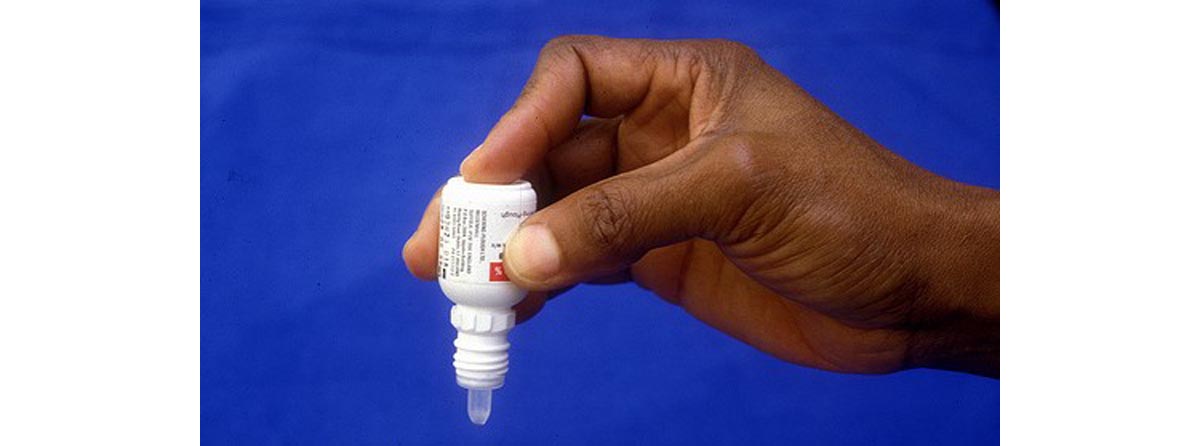Table of Contents
The researchers delivered two different types of cholesterol regulators namely, Liver X Receptor agonists and microRNA-33 inhibitors, in the form of eye drops into the eye of an old mouse. Both these drugs act by increasing the levels of ABCA1 protein inside the microphages. To their surprise, the researchers observed that the process of macular degeneration was actually reversed in the mouse’s eye. The macrophages were able to clear the cholesterol depositions more effectively and the development of new abnormal blood vessels was slowed.

The researchers are all the more excited, because by delivering the drug directly into the eyes in the form of eye drops, the systemic side effects can be reduced. As the macrophages play an important role in clearing the cholesterol, and their ineffectiveness can lead to diseases like atherosclerosis and neovascularization of cancerous tissue, the same pathway can be used to find more effective treatments for these conditions.
Studies done in the past had indicated an association between atherosclerosis and macular degeneration
Although it is only now that researchers have stumbled upon the fact that medicines used to lower cholesterol can be employed to reverse the process of macular degeneration, studies done in the past have already indicated an association between the two diseases.
Way back in 1995, a study published in the American Journal of Epidemiology, called as the Rotterdam Study, had concluded that age related macular degeneration is associated with atherosclerosis. The study, which was carried out by Johannes R. Vingerling, along with colleagues, enrolled 104 patients with macular degeneration and 1,324 participants without the condition. The study was carried out between March 1990 and July 1993 in Rotterdam, Netherlands. The researchers took fundus photographs of the participants to look for evidences of age related macular degeneration. Ultrasounds were carried out to find the presence of carotid atherosclerosis. Atherosclerosis in the arteries of lower extremities was also studied.
The researchers found that presence of atherosclerotic plaques in the carotid bifurcation, in participants younger than 85 years of age, was associated with 4.7 times increased prevalence of macular degeneration. Presence of atherosclerotic plaques in the common carotid artery was associated with 2.5 times increased prevalence of macular degeneration. Atherosclerosis of the arteries of the lower extremities was also linked with 2.5 times increased prevalence of the disease. This led the researchers to conclude that atherosclerosis may be playing a role in the development of age related macular degeneration.
Age related macular degeneration mainly affects the central vision
Age related macular degeneration usually affects the macula. It is the part of the retina consisting of millions of cells that sense light. It is responsible for providing a sharp, detailed central vision. Due to the damage to macula because of lipid deposition (as in dry macular degeneration) or development of new abnormal blood vessels (as in wet macular degeneration), the image perceived is pretty hazy. However, one rarely encounters complete blindness due to macular degeneration. Even though the central vision is impaired in this condition, the peripheral vision remains intact. Apart from atherosclerosis, smoking and a positive family history are two important risk factors for developing age related macular degeneration.
The treatment of macular degeneration is usually complicated and does not lead to a complete cure. However, in the wake of the new study, the future of the treatment of macular degeneration appears promising.
- “Impaired Cholesterol Efflux in Senescent Macrophages Promotes Age-Related Macular Degeneration,” by Rajendra S. Apte, et al
- published in the April 2, 2013 issue of the journal Cell Metabolism, accessed on May 28, 2013
- “Cholesterol Buildup Links Atherosclerosis and Macular Degeneration,” published on April 2, 2013 at sciencedaily.com, accessed on May 28, 2013
- “Age-related macular degeneration is associated with atherosclerosis-The Rotterdam Study,” by Vingerling JR, et al, published in the August 15, 1995 issue of the American Journal of Epidemiology, accessed on May 28, 2013.
- Photo courtesy of Community Eye Health by Flickr : www.flickr.com/photos/communityeyehealth/5445396658/
- Photo courtesy of Community Eye Health by Flickr : www.flickr.com/photos/communityeyehealth/8489872984/


Your thoughts on this